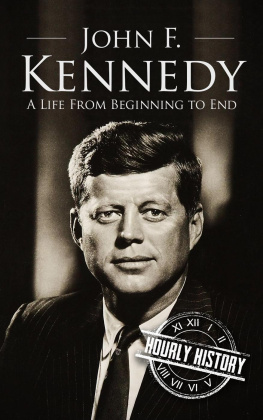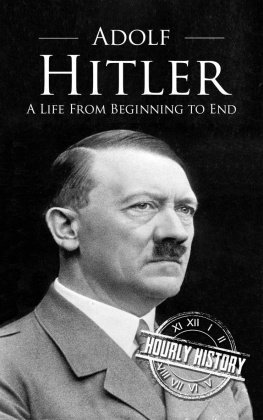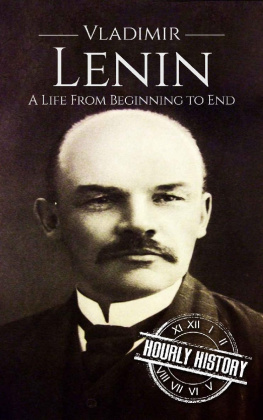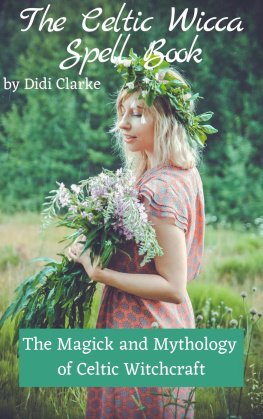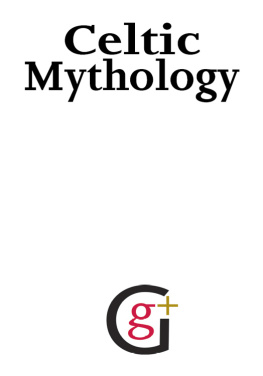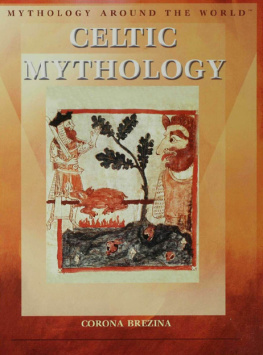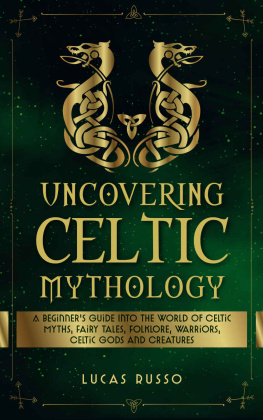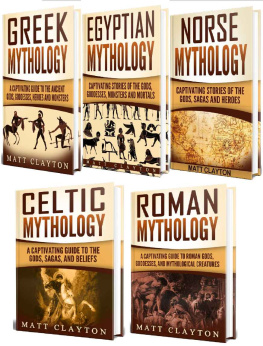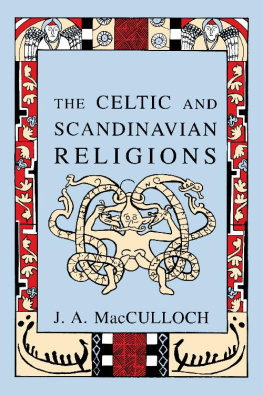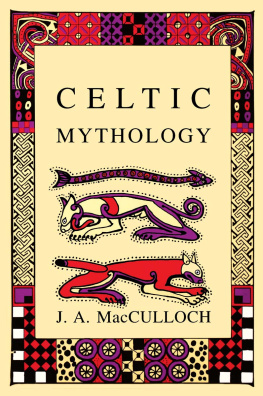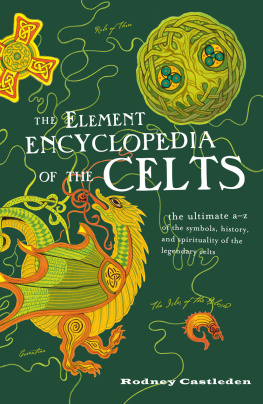Celtic Mythology: A Concise Guide to the Gods, Sagas and Beliefs
Hourly History
Published by Hourly History, 2016.
Table of Contents
Introduction
Invocation to the Dagda
Hail Eochaid Ollathair, Father of All!
Hail Ruad Ro-fhessa, Lord of Perfect Knowledge!
Lord of the Oak Tree,
Phallus of the summer saplings,
Rough as tree bark is your wisdom,
Yet deep as sunken roots.
You who can call the seasons with your harp,
You are called upon by the common people
For your gift of fair weather.
You whose club is so great
That nine men are required to carry it
And even then it plows a great ditch;
Whose terrible end slays hundreds at a blow
And whose other end can restore them to life;
You stake your life on the fertility of the land
That others may survive the cold winters.
You who build great fortresses,
You know what it is to be the sole protection
Of those you love, and to go forth
In battle to save their lives.
By Cianaodh g from Our Pantheons Way
T he land we call Ireland today boasts an ancient monument that is older than the Sphinx or Stonehenge and served both as a place of worship as well as a royal burial chamber. Called Newgrange, it is located in County Neath, on the river Boyne. It is what archaeologists used to call a passage tomb. It is large; 85 metres in diameter and 13.5 metres high, covering nearly an acre. It is a sophisticated and intricately designed and decorated structure and archaeologists are confident that it doubled as a place of ritual worship. At the Winter Solstice, the sun penetrates to the central inner chamber, which remains lit up for about 17 minutes each year.
Newgrange was probably constructed by the first peoples who lived in Ireland, in a time before the Flood. The earliest peoples are called the Partholonians, and they seem to have been wiped out by some dreadful disease, perhaps a plague, or perhaps destroyed by the tribe led by Nemed, said to be descended from the biblical Noah. The great Nemedian Druid, Mide, is said to have been the first to light a fire in Ireland, at Uisnech. The travelling agrarians who washed up on those shores included Indo-Iranians, Scythians, Germanic and Slavic peoples, Grecians, Europeans, Central and South Asian traders, adventurers and warriors. In time they also came from Austria, Bavaria, Switzerland and the Balkans. Mostly, though, they were ferocious Gauls from France, Belgium, and the lowlands, with a generous sprinkling of Spanish wanderers.
The Fir Bolg, from Spain and Greece, originally served as slaves to the Nemedians, but soon gained ascendency over their masters; they divided Ireland up into five parts and settled down to rule. They were challenged by the people of the goddess Dana, who arrived from the north-west. These were known as Tuatha d Danann, and they were to become the greatest aristocracy of Ireland. They fought the Fir Bolg at the First Battle of Moytura where their King, Nuada, lost a hand. After a four-day battle, the Tuatha d Danann left the battlefield, and the Fir Bolg retained Connaught.
At about this time, at least one thousand years after the Great Flood, there arose from the Tuatha d Danann the powerful Irish god Eochaid Ollathair, who ruled in Ireland. He was the all Father, God of Magic, God of Time, Protector of Crops or The Dagda. He certainly is one of the legendary figures said to be buried at Newgrange.
Chapter One
The Arrival of the Tuatha d Danann
T he story is told in the Annals of the Four Masters ( Annla na gCeithre Mastr ) compiled by Franciscan monks. The Tuatha d Danann, a mythical race of god-like beings with supernatural powers, came to Eire in the mists, or perhaps in a cloud, across the seas. They arrived with four magical possessions treasures in fact that played a significant part in Celtic mythology. The first was the Lia Fail , the Stone of Destiny, upon which all Irish Kings would be consecrated. The stone emitted a great roar when the rightful king stood upon it. The second was the Claiomh Solais, or Shinning Sword. This was an invincible sword of light and crafted by the poet/wizard Uiscias. It was always carried by King Nuada of the Silver Arm, and once drawn, it would always kill. The third treasure was Lughs Spear. Its tip was fashioned of dark bronze, finely tapered and fastened to a rowan shaft by thirty rivets of gold. Much magic went into its making. The final possession was the Dagdas Cauldron. This large domestic container would never run out of food, and all who sat at it would be satisfied. It was made by a druid named Semias and imbued with such power that its abundant supply of food fed any number of warriors; additionally, it could heal any wound and indeed even restore life. This was more or less the time of the Bronze Age, and the following influx of people came mostly from Spain via Egypt and would go down in pre-Christian history as the Milesians. They came equipped with a new generation of iron weaponry, and the powerful Tuatha d Danann were forced out of the mainstream. The resulting cultural clash of the natural powers of sun, moon, earth and militarist bent of the Milesians, with the mystical, magical and more intellectual beliefs of the Tuatha tribes, settled into the compromise that developed for many years. Broadly speaking, Ireland fell into two halves divided by the river Boyne.
Somewhere along this continuum of time are the beginnings of the Celtic Ireland we now recognize, although there are few original sources of its beginnings. A few sacred sites, some sculptural decorations on ancient monuments, and the insular literature that has survived is much tainted by the fact that it was written so long after the event. In the Book of Invasions there is a story of the day the sons of Mil arrived on the Irish shoreline; the great poet Amhairghin set foot on land and declaimed thus:
I am a wind in the sea (for depth)
I am a sea-wave upon the land (for heaviness)
I am the sound of the sea (for fearsomeness)
I am a stag of seven combats (for strength)
I am a hawk upon a cliff (for agility)
I am a tear-drop of the sun (for purity)
I am fair (i.e. there is no plant fairer than I)
I am a boar for valour (for harshness)
I am a salmon in a pool (for swiftness)
I am a lake in a plain (for size)
I am the excellence of arts (for beauty)
I am a spear that wages battle with plunder.
I am a god who forms subjects for a ruler
Who explains the stones of the mountains?
Who invokes the ages of the moon?
Where lies the setting of the sun?
Who bears cattle from the house of Tethra?
Who are the cattle of Tethra who laugh?
What man, what god forms weapons?
Indeed, then;
I invoked a satirist...
a satirist of wind.
With thanks to the Celtic Myth Podshow. See: http://celticmythpodshow.com/Resources/Amergin.php
The history of Celtic mythology is held in the natural landscape, in the bloodlines of its people, in apparitions that manifest and then are gone as you glance their way. There is very little you can pin down, and there is much more than you can ever tell.
There were many, many great leaders and warriors during these times leading up to the birth of Christ. One Melisian King, who brought much order to the country, was Ollam Fodla, Doctor of Wisdom. He divided the country into Cantreds, appointing a chief, or Brugaid, over every territory, and a steward in every town. He established a school of learning and the Feis of Tara, which was a parliamentary gathering held once every three years and attended by chiefs, scholars, and citizens of the entire nation, to decide on governing principles for the country.



